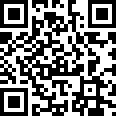|
Screening Tool |
Age Range |
Administration |
|
Ages 1 month to 5.5. years |
10–15 minutes for parents to complete and 2–3 minutes for professionals to score |
|
|
15 months to 6 years |
30-40 minutes for parents to complete and approx. 5 minutes for professionals to score |
|
|
18 to 60 months |
1-5 minutes for parents to complete and less than 30 seconds for professionals to score |
|
|
Nipissing District Developmental Screen (New Name: Looksee Checklist) |
1 month to 6 years |
5 minutes for parents to complete online or in person with professional |
|
Birth to 8 years |
2-10 minutes for parents to complete. Also can be administered and scored online with a license fee |
*Not free
Communication Indicators
Communication indicators may include:
- Difficulty participating effectively in social conversations
- A preference to talk about one or two favourite topics
- Difficulty reading body language (e.g., not able to understand the meaning of shoulder shrugging [i.e., “I don’t know”], not picking up on subtle cues to stop talking about something that was intended to be held in confidence)
- Difficulty interpreting instructions that rely on taking the context into account, which can lead to workplace challenges (e.g., not knowing that sitting alone during break time at work is not what co-workers expect)
- Difficulty functioning in group interactions or conversations that include rapid topic changes
- A flat, monotone, or robotic speaking pattern that does not match the emotional content
- A tendency to communicate in ways that others interpret as blunt, rude, or uninterested
- A tendency to interpret language literally and have difficulty understanding idioms (e.g., “He got cold feet” or “Don’t look a gift horse in the mouth”)
- Unusual use of eye contact (e.g., may make less eye contact than others, not use eye contact when spoken to, or stare at others for long periods)
Social Indicators
Social indicators may include:
- Difficulty reading social cues (e.g., picking up on subtle changes in another person’s voice or body language to catch a lie, recognize sarcasm, or figure out that what is being said is meant to be a secret)
- Difficulty following social rules (e.g., “talking over” people, getting too close to others, or getting very upset if someone touches or gets too close to them)
- Difficulty functioning in large groups and preferring one-on-one social situations
- High anxiety in social situations
- Difficulty establishing and maintaining close friendships
- Difficulty establishing and maintaining romantic relationships
- Difficulty reading facial expressions or engaging in facial expressions that communicate emotions accurately
- Difficulty regulating emotions or responding appropriately to the emotions of others.
- Difficulty expressing thoughts and feelings
- A sense of feeling different from others without knowing why
Repetitive Behaviours and Restricted Interests Indicators
Indicators in this category may include:
- Exceptional knowledge about one or more specific topics (e.g., a historical period, a book series, black-and-white movies from the 1950s, etc.)
- Exaggerated responses to changes in routines (e.g., difficulty switching from one task to another at work without advance notice or difficulty when plans are changed)
- Exaggerated responses to the unexpected (e.g., responding with an emotional outburst to even a minor change, like a scratch on a favorite object)
- Exaggerated responses when personal items are moved or rearranged
- Repetitive behaviors (e.g., fiddling with items, body rocking, pacing around the same path in a garden)
- Rigid routines, schedules, and daily patterns that must be maintained (e.g., insisting that furniture remain in a specific configuration or that a daily routine remain static; needing to perform a task in a certain way until it is “just right”)
- An insistence on sameness (e.g., playing the same music before bed every night, reading the same book repeatedly, wearing the same type of clothes or eating the same foods every day)
- An exaggerated sensitivity to environmental distractions such as noise or bright lights in the workplace
- Hypersensitivity or hyposensitivity to sensory input (e.g., exaggerated or no reaction to pain, sound, touch, or smell)
- An impulse to smell, feel, or collect/hoard specific items
Other Indicators
May include:
- Appear overly clumsy and have difficulty with coordination
- Be perceived by others as eccentric
- Mental health issues/disorders such as depression, obsessive compulsive disorder (OCD), eating disorders, and anxiety (e.g., feeling anxious about going to new places or being in social situations, experiencing greater than expected distress/concern when other people touch their possessions)
- Have sleep difficulties
- Have poor self-regulation and difficulty self-calming (e.g. becomes very angry or frustrated quickly and goes from calm to outburst in seconds)
Source: UBC CPD eLearning Autism And Neurodiversity In Primary Care
